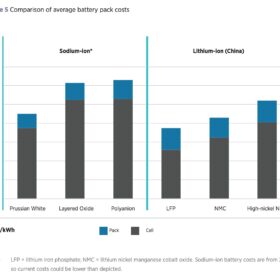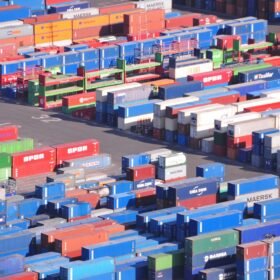In recent years, rooftop solar has emerged as a cornerstone of India’s clean energy transition. Under the PM Surya Ghar- Muft Bijli Yojana (PMSG: MBY), the government aims to install rooftop solar (RTS) systems in one crore households, achieving an aggregate capacity of 30 GW.
However, as the scale of deployment increases rapidly, so do concerns regarding grid stability, cybersecurity, and more broadly, energy sovereignty. To address these, the Ministry of New and Renewable Energy (MNRE) has introduced stricter inverter and data communication protocols, measures many consider overdue but vital. This article explores what these changes are, why they matter, and how they help safeguard India’s energy sovereignty.
What has changed in key protocols and guidelines
All inverters supplied under the PMSG-MBY must now connect directly to national servers or software platforms managed by MNRE or designated government agencies. Previously, many inverter monitoring or data-logging devices sent data to third-party or even foreign servers.
Machine‑to‑Machine (M2M) SIM Protocols. Communication devices such as data loggers, dongles, etc., must use M2M SIM cards, these are SIMs designed for devices rather than human‐operated handsets. The aim is more secure, consistent, and reliable communication from the rooftop solar installation to the central server, reducing vulnerabilities in data transmission.
Vendor‑Neutral, Open Communication Protocols & Security Guidelines. MNRE has issued draft guidelines that include Standardization of message formats (e.g. using JSON), structuring of topics (periodic data, event-based alarms, etc.).
Device authentication (digital certificates, IMEI registration), encryption of communication channels (AES‑256 over TLS/SSL), time‑sensitive one‑time passwords for message exchanges.
Remote monitoring systems (RMS) specificity on what kind of data, frequency, events, diagnostics, etc.
Integration Testing from September 1, 2025. To ensure compliance and technical readiness, MNRE has set September 1, 2025, as the date from which integration testing of inverter communication devices with national servers begins.
Centralisation of Data, Indian Servers. All data (generation, grid status, etc.) must be stored on servers located in India, under oversight of MNRE or agencies appointed by it. This eliminates dependency on foreign infrastructure or third-party foreign servers that might be subject to foreign jurisdiction or influence.
Importance of these measures and risks involved
Before discussing how these protocols help, it’s important to understand the risks that prompted them.
Inverters and their communication modules are key vulnerable points. If compromised, they can be manipulated to disrupt generation or destabilize grid operations.
When data (or even control commands) flows via foreign servers or third parties, there is the risk of unauthorized access or influence over critical infrastructure. Transmission of data outside India raises concerns about data privacy, potential surveillance, or sabotage.
With millions of rooftop systems feeding into the grid, real‑time monitoring becomes essential. If the grid operator lacks visibility over what each inverter is doing (faults, misbehaviour, underperformance, etc.), it becomes hard to maintain frequency, voltage, or respond to disturbances.
For a scheme that is subsidy‑driven, accurate measurement of generation is vital. Data inconsistency or manipulation could lead to inflated claims or misuse of public resources.
What energy sovereignty means, and how these protocols help
By energy sovereignty, we mean the ability of the country to control, manage, and secure its energy infrastructure, data, supply, and decision‑making, without undue dependence or vulnerability to external actors or insecure systems.
Here is how the stricter inverter protocols help protect it:
When data related to energy generation, consumption, grid interactions, etc., reside on Indian soil and under Indian governance, the risk of foreign access or legal jurisdiction over that data is materially reduced. This ensures that India can set norms for use, sharing, and protection of energy data.
With many solar-related devices and servers originally relying on foreign hardware/software (especially Chinese‐made inverters and possible external servers), India risks being impacted by supply chain or geopolitical disruptions. These protocols force local (or domestically governed) infrastructure for critical monitoring functions.
Real‑time, secure monitoring through M2M SIMs and authentic, encrypted communication channels allows faster detection & response to faults, cyberattacks, or abnormal behavior. This supports voltage, frequency, and reliability better than a loosely monitored tapestry of systems.
Mandates for OEMs to comply, testing regimes, vendor neutral protocols mean that there is less room for fly‑by‑night devices that may compromise standards. Enforcement becomes easier when data flows into centralized systems managed by governmental scrutiny.
Both investors (in solar manufacturing, deployment) and consumers benefit when there is regulatory clarity and assurance that the system is safe, secure, and sovereign. This reduces risk premiums and may help attract more domestic investment into solar components, inverter R&D, local manufacturing, etc.
While the positive impact is significant, there are practical challenges that India must manage carefully:
OEMs, manufacturers, and installers will need to upgrade hardware/software, possibly redesign devices to meet encryption, certificate, and communication protocol requirements. Costs may increase, which could reflect in end‑user prices unless subsidies or incentives absorb them.
If many inverters in the market currently don’t meet the new norms (especially foreign ones), there could be supply shortages or delays unless the industry adapts quickly.
With many different makes and models of inverters, harmonizing communication formats, data fields, firmware updates, security patches etc., is nontrivial.
Centralization of data raises its own concerns. Who gets to see what data? Under what conditions? There will need to be strong privacy safeguards so the system is not misused.
The infrastructure (servers, software, secure systems) must be robust, scalable, and secure. Any compromise of the centralized infrastructure is a single point of failure.
India’s decision to tighten inverter protocols and secure rooftop solar data under national jurisdiction is a critical step toward reinforcing its energy sovereignty. With ambitious rooftop solar targets already underway, these measures help ensure that growth in clean energy does not come at the cost of vulnerability in grid security, data privacy, or foreign dependence.
By insisting on national servers, M2M SIMs, open communication protocols, and strong cybersecurity standards, India is laying the groundwork for a rooftop solar ecosystem that is secure, transparent, and resilient. Implementation will undoubtedly face hurdles, but the benefits, protection of energy infrastructure, safeguarding of data, and strengthening of national autonomy are well worth the effort
The views and opinions expressed in this article are the author’s own, and do not necessarily reflect those held by pv magazine.
This content is protected by copyright and may not be reused. If you want to cooperate with us and would like to reuse some of our content, please contact: editors@pv-magazine.com.








By submitting this form you agree to pv magazine using your data for the purposes of publishing your comment.
Your personal data will only be disclosed or otherwise transmitted to third parties for the purposes of spam filtering or if this is necessary for technical maintenance of the website. Any other transfer to third parties will not take place unless this is justified on the basis of applicable data protection regulations or if pv magazine is legally obliged to do so.
You may revoke this consent at any time with effect for the future, in which case your personal data will be deleted immediately. Otherwise, your data will be deleted if pv magazine has processed your request or the purpose of data storage is fulfilled.
Further information on data privacy can be found in our Data Protection Policy.